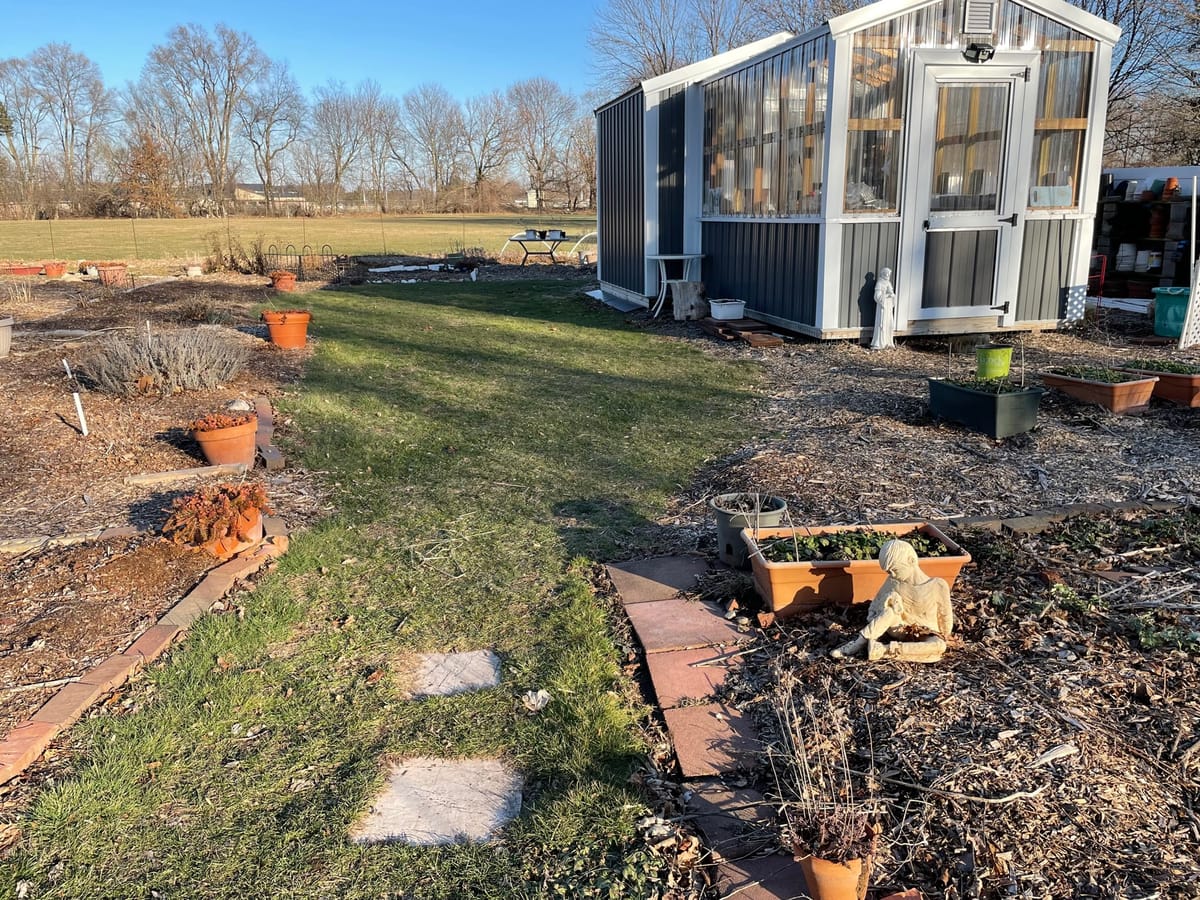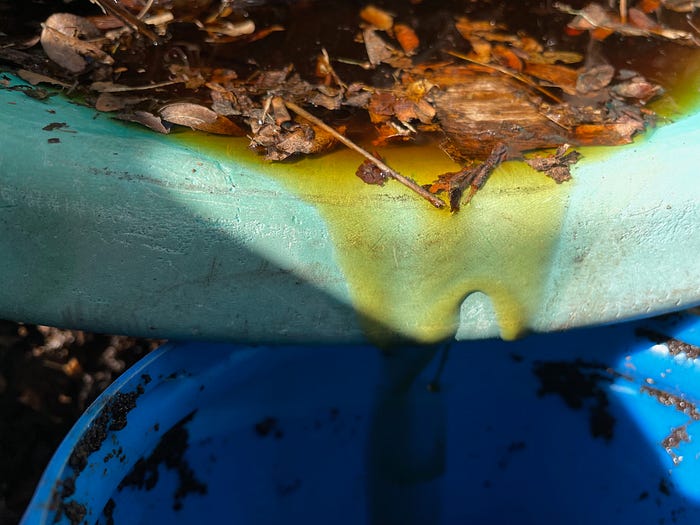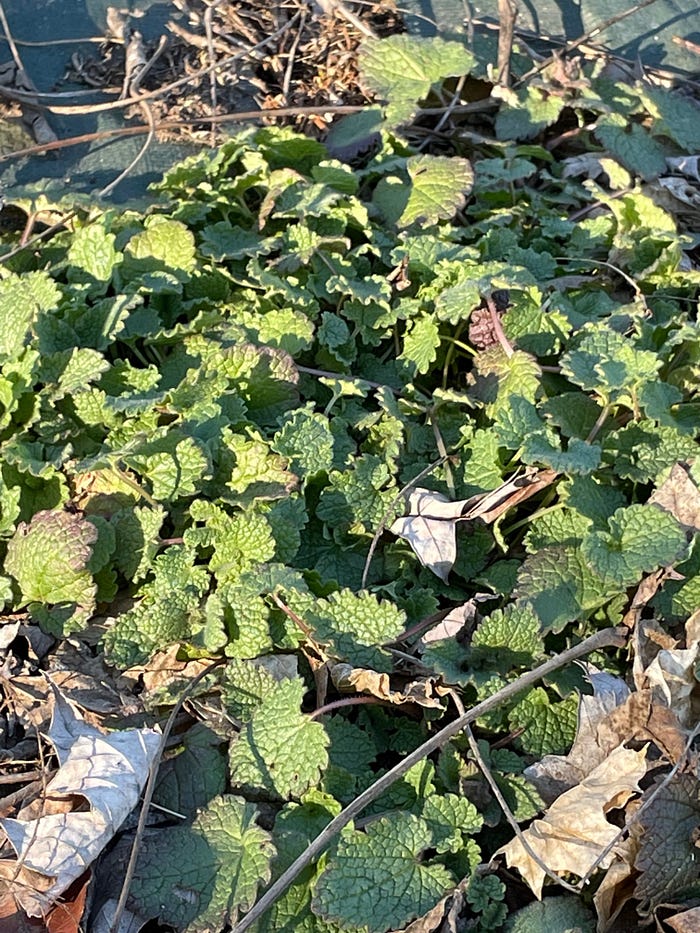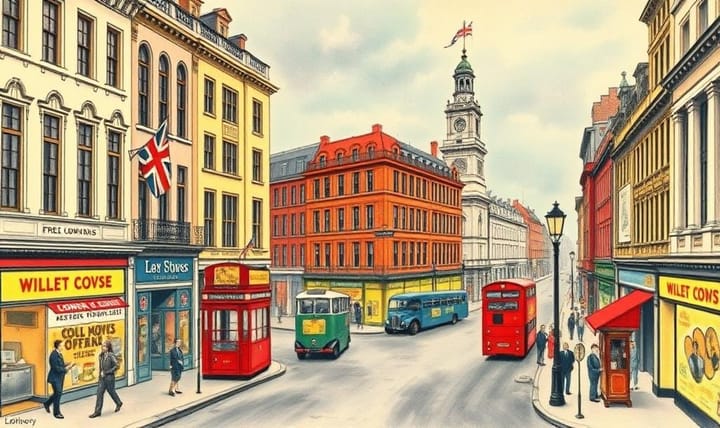Late Winter is a Great Time to Let Your Right Hemisphere Out in the Garden
Plus: Seven Things I Did in the Garden this February

Gardening is a model of the brain hemispheres working together properly.
That’s my theory, anyway, and why I named my new Medium publication The Gardening Hemisphere.
If you’re not acquainted with Iain McGilchrist’s “hemisphere hypothesis,” you can find a primer here, but in a nutshell: In a healthy person, the two brain hemispheres attend to the world differently but cooperatively, with the right hemisphere ruling.
The right hemisphere takes a broad view, looking at the whole. It’s good at dealing with new things and uniqueness. It’s the “master”; it’s concerned with the whole kingdom.
The left hemisphere takes a narrower view, looking at specific aims and goals. It’s good at using known facts and tools. It’s the master’s “emissary,” dispatched to deal efficiently with specific tasks.
The modern world is a world where the left hemisphere has usurped the master’s role. We live in a world dominated by left hemisphere traits: efficiency, speed, counting, dividing, manipulating.
It’s a major problem. We all have a duty to put the right hemisphere back in its rightful “master” position, whatever that may mean to each of us. (I publish a newsletter, “Outside the Modern Limits,” to give tips on how to re-establish the right hemisphere’s position, if you care to subscribe.)
Most Time in the Garden is Left Hemispheric
If you’re gardening, I think you’ve already taken a major step toward re-establishing a proper working relationship between the hemispheres.
The bulk of the time in the garden is left hemispheric: measuring planting distances, counting seeds, digging the proper seed depths, mixing the right amounts of fertilizer and soil amendments, plotting and planning the planting. I even compound it by always wearing a pedometer and measuring my steps while gardening (our culture’s widespread use of the pedometer might be “Illustration A” of how the left hemisphere runs rampant today).
But Gardening First Requires the Right Hemisphere
Before all that left hemisphere activity, though, comes the right hemisphere.
It sees the goodness of the garden and dispatches the left to carry it out.
The right hemisphere thinks about how the garden will come together, which requires a lot of imagination, a right hemisphere function:
Most forms of imagination and innovation, intuitive problem solving, spiritual thinking, artistic creativity transcend language, which is arguably the primary tool of the left hemisphere. The Master and His Emissary (Yale, 2009), 107.
It knows gardening is a process, which requires patience and, quite often, doing nothing (thereby exercising the Taoist principle of wu-wei: non-adieu, which is a right hemisphere way of (not) doing things).
It knows gardening is slow, a trait that frustrates the heck out of the left hemisphere.
The right hemisphere is open to change, flow, and the animate: things that grow, which is exactly a thriving garden, even if the change, flow, and animation move so slowly we can’t see it, until we go on vacation and see how everything deteriorated (something that frustrates the left hemisphere but amuses the right).
It accepts things without a lot of questions. I don’t know how nitrogen, phosphorus, potassium, and micronutrients work: I just add them to my soil. I don’t know why a debris pile (see below) attracts beneficial insects and I doubt I’ll even see it working, but I feel confident that if I start the process, the results will take care of themselves.
And perhaps most importantly, the right hemisphere opens things up to possibility. (The Matter with Things (Perspectiva Press, 2021), 28.
The Right Hemisphere Lets the Left Hemisphere Out to Play in the Garden
The right hemisphere uses imagination and possibility to dispatch the left hemisphere to implement its ideas in a flurry of left-hemispheric activities. It’s kind of like an owner letting a dog out into the backyard where it can run and dig, but here, we’re the dog and we walk all over, count, dig, and plant.
And nobody gets hurt. The left hemisphere inclines to mischief, like it has a constant inclination to overcome the right hemisphere and take control, resulting in pursuits detached from the greater good (Exhibit A: the business owner who contaminates the environment in pursuit of profits).
The garden lets the left hemisphere run wild but keeps it reigned. Nobody gets hurt, unless perhaps we use a flame weeder to set a neighbor’s tree on fire just feet from his shed that holds containers of gasoline or dump fresh manure in such a quantity that your neighbors gag (two indiscretions in my 15-year gardening history).
Late Winter is When the Master Lets Itself Out to Play
Late winter, at least in the northern zones (I’m Zone 5b), is a frustrating time for the left hemisphere.
There’s not much to do.
We let the dog out to run around, and it’s just too cold and anything we do won’t accomplish much . . . and the left hemisphere requires a goal or purpose, a specific mission from its master.
So instead, we can let our right hemisphere out.
When we walk into the post-winter carnage that is the garden, we’ll find all sorts of things that trigger the imagination and possibilities.
I can’t even list them. They’re legion and they’re unique. Every garden is different. Just walk, stroll, around and see what strikes you. There are no planting schedules or beds to be formed and fertilized so you can get the spring crop in before it’s too late. Just take it easy and see what you see.
If you want a few examples, here are things I did on the last Sunday of February, none of which were planned. I just meandered around the garden, saw something with possibilities, and did it.
All, some, or none of these might apply to your garden or urban plot. Every garden is different: every garden is a new thing. That’s what makes gardening a proper pursuit of the right hemisphere.
I started a debris pile
That winter storm broke a ton of branches in my yard. I gathered them, cut them, and started a debris pile on the other side of my garden fence. I’ll keep adding debris to it over the years. Why? Because it’s a good way to attract beneficial insects, especially bees and beetles.
I got it three feet high. Supposedly, once I get it to six feet, it’ll self-regulate itself at that height, no matter how much debris I add.

I made containers of leaf mold biology
I learned about this from Nigel Palmer’s Regenerative Grower’s Guide to Garden Amendments. That guy can make fertilizer out of pretty much anything.
I shred a lot of leaves in the fall and use them for mulch, but last year, I didn’t get my final container dumped, so it sat all winter, accumulating snow and ice. It is melted now, with nasty water fermenting on the bottom.
They say our ancestors discovered alcohol this way. Could be. Nigel Palmer showed me that “nasty” water can be poured into a container with a potato (the starch feeds the organism in the leaf mold and fills the bucket with “local life”) and a pinch of sea salt (I’m not sure what that does). By late spring, I’ll have a nice fertilizer that I can add to my beds or pots.

I harvested “good water”
All water is not created equal. Your garden prefers rainwater or melted snow. There’s a lot of it this time of year. I went out and emptied melted snow from my wheel barrel and other unintentional containers into containers )plastic coffee ground containers from my office, 5-gallon buckets, etc.), giving me about 25 gallons of premium water, which I’ll use to make various fertilizers throughout the spring by soaking old leaves and some sort of “green” plant (e.g., kale that over-wintered but looks like heck right now).
I unpacked a peat moss
I picked up a big bale (three cubic feet) of peat moss at the end of the season last year. Peat moss makes a great potting mix (caveat on sustainability), but it’s acidic.
You can apparently blunt the acidity by unpacking it and letting it air out. If you add water to it, that further reduces the acidity. So I unpacked it, dumped it into a clean trash can, and mixed in water infused with kelp fertilizer, vermiculite, perlite, and a half-cup of lime.
I scavenged for soil amendments
My subdivision sits against the local high school sports complex. It’s separated by woods. People dump yard and garden waste there. I harvest it every February/March. I find peeling bark, rotted wood, neighbors’ 2022 mums with the potting soil wrapped tight with the roots. I mix it together in a big container, water with a kelp mix, and let it sit until the following year (or possibly two or more years, depending on how much bark is in there . . . bark takes forever to decompose).
Here’s a (blurry) pic of my waste harvest from February 2022 as of now (2/26/23):

I used “Planto” to identify that early weed
I saw a weed, and my initial reaction was, “Frick! It’s only February and I already have weeds! Let’s pull it out.”
But then I paused a second, took out my phone, and sent a pic of it to Planto.
It turns out that it’s a weed, but it’s a good weed. Dead Nettle is edible and full of nutrients. I suspect it’d also make a good fertilizer.
Now the only question is, just how much leeway do I give it? If it goes to seed, I could have a serious problem in future years.
Oh well. I’m just shrugging now. I’ll see what comes to me in April.

I prepared half of my Hugelkultur for planting next week
There’s one major right-hemisphere feature that outdoor gardening in February fosters: a detachment from progress.
The left hemisphere is obsessed with progress: reaching the goal with maximum efficiency. The right hemisphere isn’t.
February gardening isn’t very good for progress. It’s one of the least efficient things ever. Much of the effort will be forgotten or lost in the (statistically likely) final winter blast or two. If you’re stupid enough to plant without a cold frame or hoop house, you’re most likely to waste your time, energy, and seeds.
But the right hemisphere doesn’t really care, at least not as much as the left does.
And so I prepared half of my Huglkultur for planting. A Hugulkulture is a raised bed that sits on top of logs, sticks, and half-decayed compost. The decay radiates heat upwards, warming the bed (though, to be honest, it looks and rakes just as cold as my other beds).
I’ll throw some spinach or mache or lettuce on it next weekend and see what happens.
That’s about it. It was chilly — mid-forties — but sunny and no wind. It was a beautiful day for a gardener coming out of the winter slumber and wanting to flex his right hemisphere.
And I walked 18,000 miles that day, according to my left-hemispheric pedometer.



